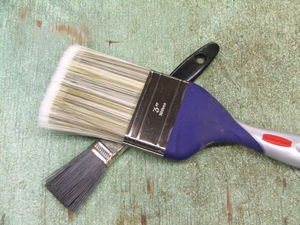With all the houseplants that are available these days, which is right for you? If you’re the type of person who enjoys simple houseplants that are fairly easy to care for then you should consider purchasing an ivy. In this article, I will discuss what this plant is like.
Describing an Ivy –
An ivy is one of the more durable types of houseplants that you can purchase. Ivies typically have green leaves that are often mixed with white or yellow streaks. The plants are a type of vine, and they can grow to be several feet in length. You can choose to prune your ivy, which will keep the vines from growing too much.
If you choose to trim your ivy, the plant will grow more leaves near the base of the plant. The extra leaves make up for the loss in length. It is probably best not to let your ivy grow too long because some of the leaves near the base of the plant will die off if the vine grows too much. So keeping your ivy pruned to about two feet in length for each vine would be ideal.
Who Should Buy an Ivy –
People who are bad at caring for houseplants should consider buying an ivy. While this plant can’t last too long without water, it can last longer than most other houseplants. After three to four weeks without water, ivies tend to develop brown spots on their leaves. With time, the leaves will turn completely brown and the ivy will die. So be sure you’re not too terrible when it comes to caring for this houseplant.
Soil –
The best type of soil for ivies is a general plant mix. You can find soil for ivies at discount stores such as Walmart. However, ivies can typically live in many different types of soil. In fact, ivies can even survive in pure water. However, they don’t appear to be very healthy when they are only in water. Some type of soil will be needed if you want your ivy to thrive.
Water –
Like I stated above, ivies can last quite a while without water. However, you may need to water your ivy more if it’s outside. Depending on how hot it is outside, you may need to water your ivy every couple of days. Or if it’s cool outside then you will only need to water your ivy every week or two. So if it’s ninety degrees Fahrenheit outside, water your ivy two times a week. If the temperature is less than that, water your ivy every week or two.
Reproduction –
Ivies are very easy to reproduce from cuttings. A cutting is basically a piece of the main plant that has been sliced off to produce a new plant. And it’s very easy to do with ivies. All you do is cut off one of the stems. When you do this, be sure that the stem is a couple of inches long. Also, ensure that there are a few leaves on the stem that you remove.
After this, place the stem in a glass of water until you see tiny white roots appear. And then, place the stem in the soil and watch it grow. It should be noted that this will not work with ivy leaves. Just the stem.
Light –
Ivies tend to enjoy bright indirect light best. However, they can withstand most other types of light with the exception of direct light. Actually, it’s a combination of direct light and heat. If the temperature is near or above eighty degrees Fahrenheit then you should keep the ivy out of the sun’s direct light.
And if the temperature is below the eighty degree threshold then you can leave the ivy in the sun. Obviously, if you expect the temperature to dip near or below thirty two degrees Fahrenheit then you should take your ivy indoors to keep it warm. A freeze will kill this plant.
As you can see, an ivy is one of the easier types of houseplants to care for. So if you have a friend or relative who is abysmal when it comes to caring for houseplants, try buying them an ivy. Your friend or relative will thank you for it.



